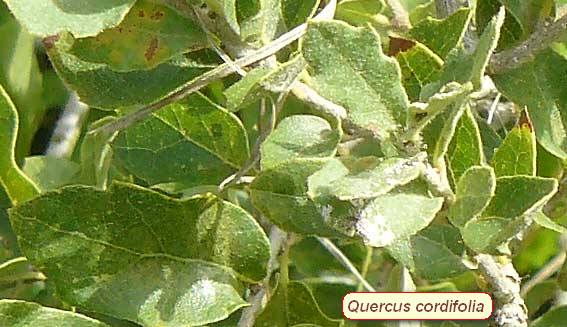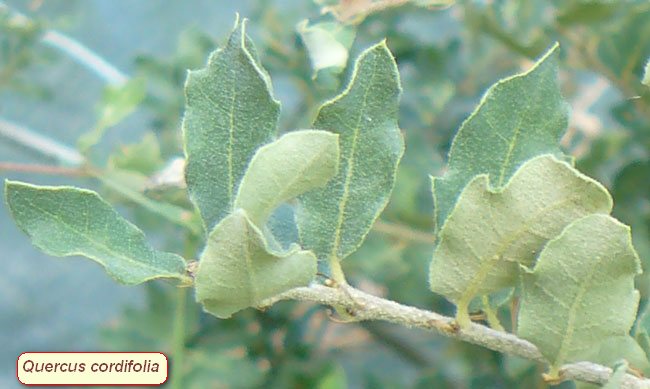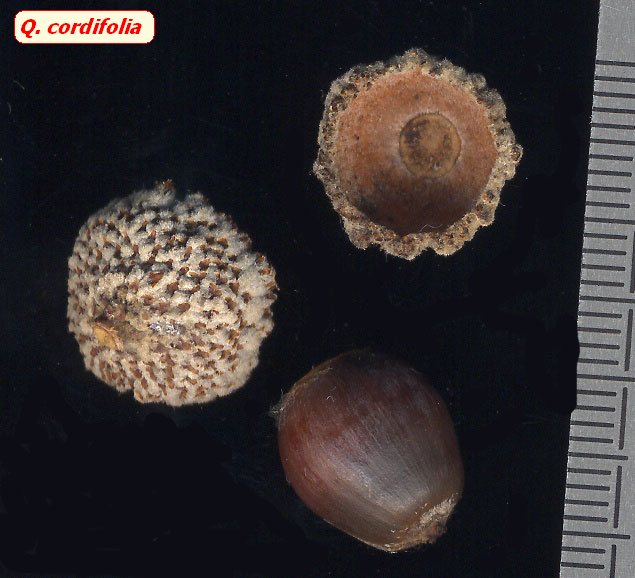| Quercus cordifolia | |
| Author | Trel. 1924 Mem. Natl. Acad.
Sci. 20: 84 Diagnosis here |
| Synonyms | |
| Local names | |
| Range | Mexico
( Coahuila, Nuevo León, San Luís Potosí, NE Zacatecas);
ca 1700-3200 m; |
| Growth habit | less
than 1.5 m; |
| Leaves | 1-4
x 0.7-1.5 cm; deciduous or semi-evergreen; thin but subcoriaceous; oval,
oval-elliptical, or oval-lanceolate; apex obtuse or remotely acute, mucronate;
base variably cordate, sometimes obtuse; margin flat, not revolute, sometimes
slightly undulate, entire or seldom with 1-2 pairs of mucronate teeth
asymmetrically arranged, and in different numbers on each side; olive
green above, with thin gray pubescence made of stellate and simple not
glandular trichomes; whitish and densely tomentose beneath, with stellate
7-12 straight rayed, 0.5-0.6 mm long trichomes, and sometimes some glandular
ones; |
| Flowers | male catkins 0.5-2 cm long, few flowered; April-May; |
| Fruits | acorn
1-1.4 cm long, ovoid or subglobose, mucronate, dark brown to blackish,
hairless; solitary to 4 together; subsessile or on short peduncle 1-2
cm long; cup halfround, straight at the rim, with thick proximal tomentose
scales; 1/3 or 1/2 enclosed by cup; ripen first year in July-September;
|
|
Bark, twigs and |
bark rough, grey, fissured into thin irregular plates; twig slender, tomentose during 1 or 2 years, becoming glabrescent and reddish, with minute lenticels; bud globose, very small (1-1.5 mm), dark red; stipules 1-5 mm long, deciduous, subulate, pubescent at base; |
| Hardiness zone, habitat | not
quite hardy; |
| Miscellaneous | -- A. Camus : n°
253 ; -- Sub-genus Quercus, Section Quercus, Subsection Leucomexicanae; -- Possible confusion with Q. striatula (often considered as a synonym), but the latter has a basally rounded leaf, with a margin flat or slightly revolute bearing 3-7 veins pairs of asymmetrically arranged teeth, longer glandular uniseriate trichomes, longer rays on the stellate trichomes, some capitate (bullate) glandular trichomes, and acorns inclosed 1/4 to 1/3 by cup. |
| Subspecies and varieties |
|
| Pictures |
|


